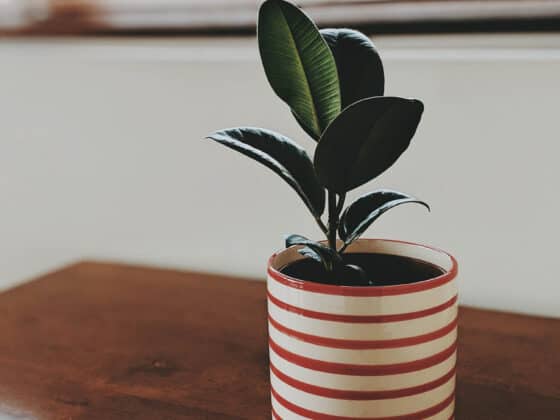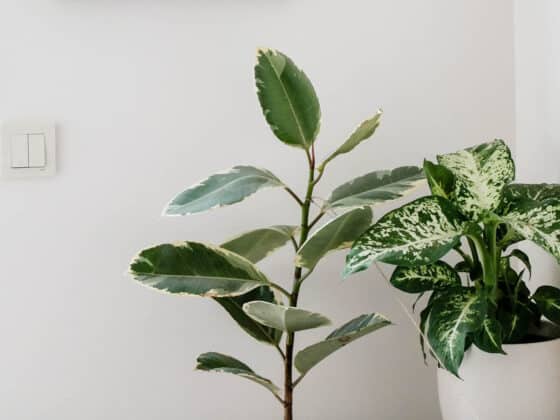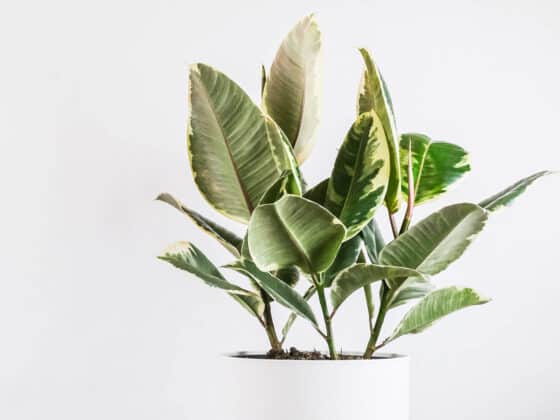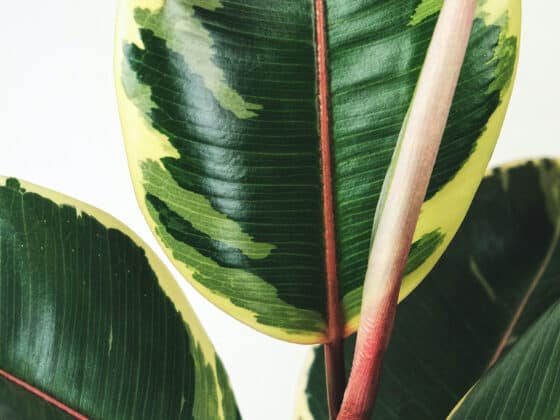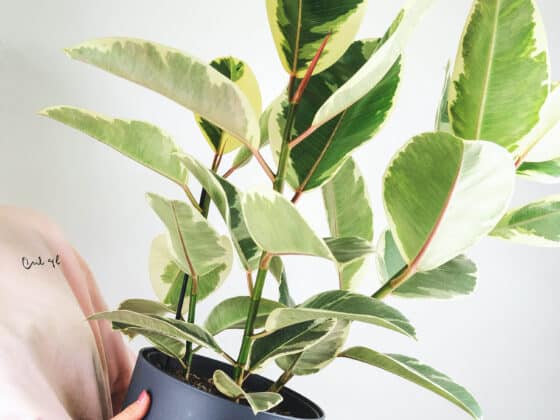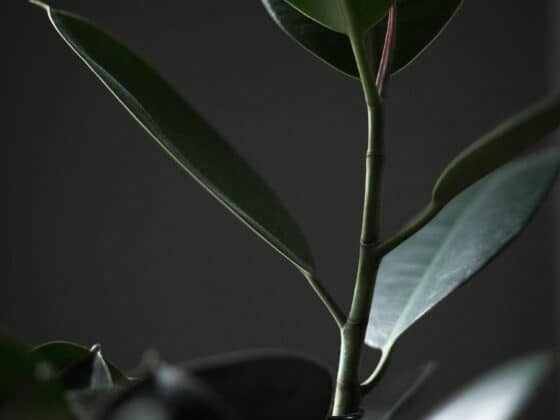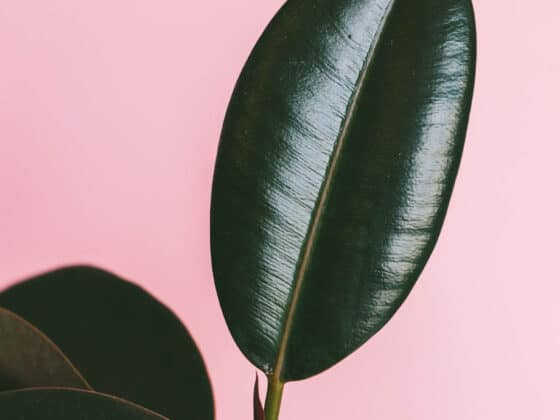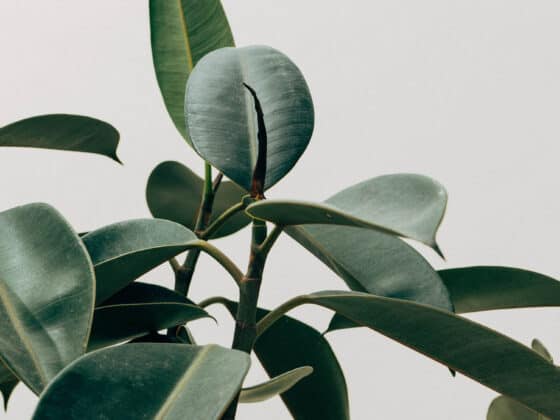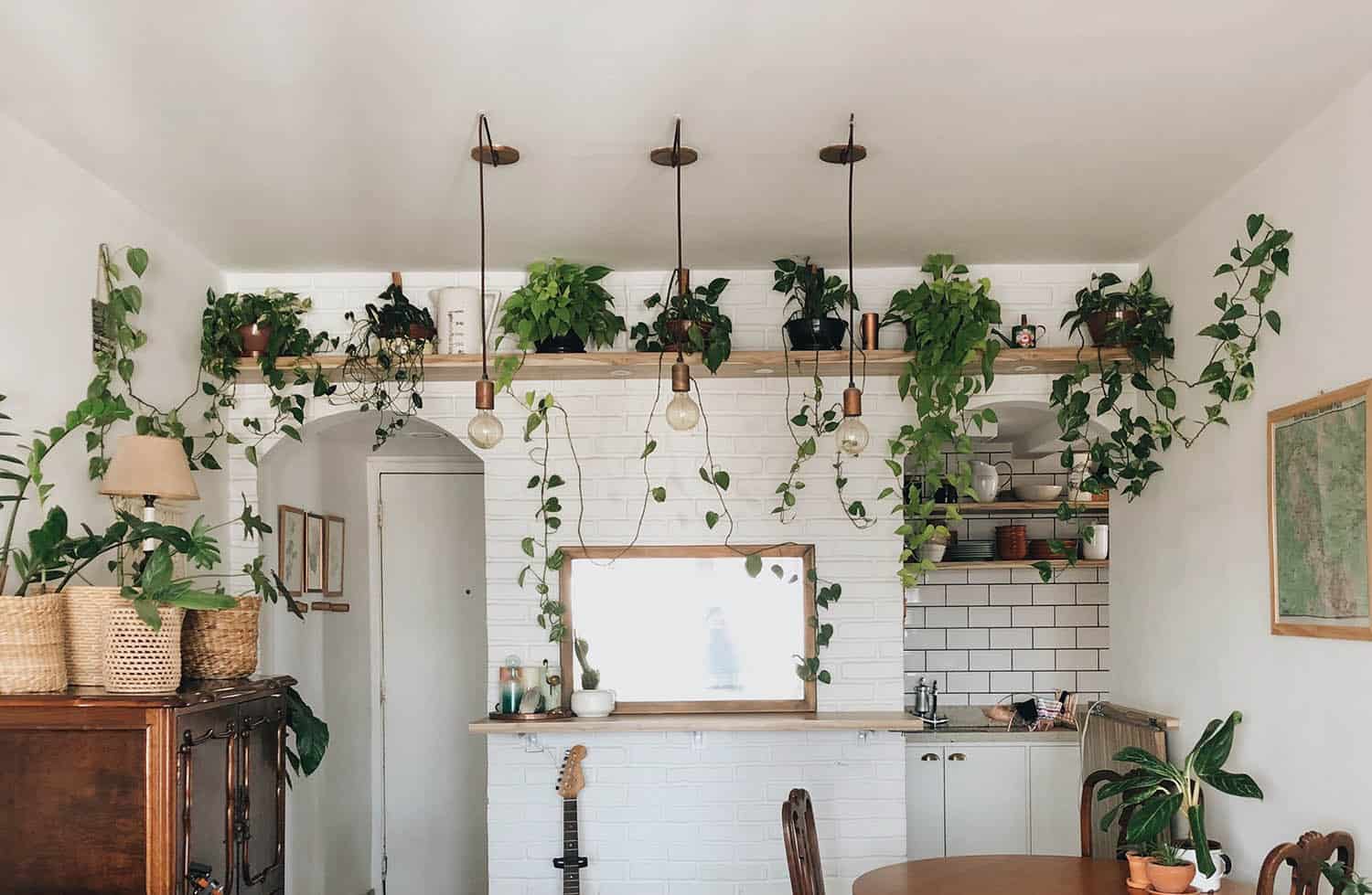After owning a Rubber Tree (Ficus elastica) for a few years now, I can safely say that these plants are surprisingly hands-off. Aside from general care and making sure they have enough room to grow, there’s not a whole lot you need to fuss over. That being said, when your Rubber Tree needs something, it will tell you…as long as you know to look for the signs.
What are the signs your Rubber Tree needs to be watered? First and foremost, paying close attention to the soil moisture will always be the most accurate way of determining if your plant needs water. Other physical signs that your plant might be thirsty include drooping leaves, brown, dry leaf tips, or yellowing leaf edges.
Keeping a close eye on the soil is your first and best option because you can provide water before the plant becomes distressed. However, keeping a close watch for the other signs is important, too, because if you happen to be underwatering, you’ll want to alter your schedule to keep the plant happy and avoid any unnecessary physical stress.
But First: How to Water a Rubber Tree
Before we get to the signs that your plant needs a drink, let’s talk about how to best water a Rubber Tree. What is the most obvious answer to the question, “How do I avoid underwatering my Rubber Tree?” A lot of people might say, “Easy…just water more frequently.”
This is, ostensibly, correct. But, without understanding what your Rubber Tree needs, you run the risk of overwatering your plant, causing bigger health problems down the road.
Rubber Trees are native to tropical rainforests in South Asia, where they thrive in warm, humid air and damp soil. Their root systems tend to be shallow and vast, soaking up lots of water and nutrients to grow tall so they can compete for sunlight.
You’ll notice I said they like damp soil, not wet soil. This is a small but important distinction because overly-wet soil caused from watering too frequently can easily damage your Rubber Tree’s root system and create disruptions in its nutrient uptake.
How do you keep the soil “damp”? The best way involves two parts: watering and drainage. First, when it is time, water your Rubber Tree deeply and thoroughly, allowing all the soil to become saturated with water.
You’ll also want to ensure your plant is potted in a container with a drainage hole and soil that is porous and quick-draining. This allows excess water to flow through the soil and out the drainage hole, preventing the soil from becoming overly-saturated with stagnate water.
How, then, do you know when it’s time to water to achieve perfectly “damp” soil, exactly? The answer just so happens to be the first sign that your Rubber Tree may need a drink.
Sign #1: The Soil is Dry
OK, so this first sign isn’t really a red flag your Rubber Tree will be waving in your face, but it is still the very best way to determine when it is time to water your plant. Bonus points if you keep up on this method because, if monitored correctly, you won’t ever run the risk of underwatering (or overwatering!) your Rubber Tree.
The secret to keeping the soil damp is to allow the first inch of topsoil to dry out completely between waterings. Easy as that.
It may seem counterintuitive to let the soil dry out so much, but because the top inch is exposed to more air and heat, it obviously dries out faster than the rest of the soil in the pot. If you dig a little deeper, you’ll notice that the rest of the soil is still perfectly moist, which is exactly what you are shooting for.
When you think it might be time to water your Rubber Tree, dig your finger into the top inch of soil and feel how dry it is. If it’s crumbly and your finger doesn’t have bits of wet soil stuck on it, it’s a great time to water the plant thoroughly, allowing the excess water to drain from the pot.
As long as the plant has good drainage, the soil will hold on to the proper amount of moisture, achieving the “damp” status you’re aiming for, and will then stay somewhat consistent drying out from the top down.
If you’re a little nervous about checking the soil by hand, consider purchasing a moisture meter to help you out. Again, being attentive to checking the soil moisture will alert you that it is time to water before your Rubber Tree exhibits any physical distress from being thirsty.
Sign #2: Drooping Leaves
If you can remain diligent about checking your Rubber Tree’s soil, you shouldn’t have to worry too much about noticing any physical signs of dehydration. However, we’re all human, and life happens, distracting us just enough that sometimes plant care goes by the wayside.
Your plant’s water needs also increase or decrease depending on the time of year or the environment in your home, so sometimes watering schedules can get away from us and our houseplants end up a bit neglected, resulting in physical distress.
One of the more common physical signs that your Rubber Tree is a tad thirsty is that its leaves will start to droop. Typically, your Rubber Tree has large, glossy, vibrant leaves that jet out from its branches and, when touched, feel stiff and solid. As the plant begins to dry out and water becomes scarce, the water pressure in the leaves (referred to as turgidity) drops, and they begin to droop a bit.
This physical symptom will quickly revert back to normal as soon as your Rubber Tree gets watered and takes up enough water to distribute through the entire plant.
Sign #3: Dry Leaf Tips
Another sign that may present itself before you notice any drooping leaves is the presence of dry leaf tips. As the plant begins to dry out, the ends of the leaves are sacrificed to preserve water, causing the tips of each leaf to begin to dry out and wither, eventually turning brown.
This is a symptom of underwatering that will, again, correct itself once the plant has an ample supply of moisture, however, the tips probably won’t ever recover fully, and the brown parts will eventually just disintegrate or fall off the plant. Any new leaves should grow out normally.
Sign #4: Yellow Leaf Edges
Like dry leaf tips, this is a symptom of dehydration that can occur before any other signs of physical distress appear, which can be shocking to discover, as it can progress quickly.
If you notice that the leaves of your Rubber Tree are exhibiting yellowing around the edges and working their way towards the center, this could be a sign that the plant is trying to conserve water.
Your Rubber Tree delivers nutrients to all parts of the plant through fluids being sent through the plant’s transport systems. The less moisture the plant has, the less likely the plant can deliver the necessary nutrients to the far-flung leaf edges, causing them to become nutrient deficient and dried out.
Watering the plant will obviously help reverse the trend, but if the leaf edges have yellowed too much, they may not fully recover back to their vibrant, normal color. Again, any new growth should be fine once the plant is adequately watered.
Don’t Overcompensate: Overwatering Is Bad for Your Rubber Tree
As plant parents, we always want what’s best for our houseplants, but sometimes, in an effort to avoid one issue, we overcompensate and end up still causing damage. This is often the case when it comes to watering.
Keeping the soil “damp” for your Rubber Tree can be somewhat of an inexact science, so the line between underwatered and overwatered becomes pretty narrow. If we end up being a bit heavy-handed with our watering habits to avoid dehydrating the plant, we can overwater it, which can cause serious issues and sometimes results in the plant dying.
If you notice many leaves on your plant yellowing or turning mushy all at once, or if multiple leaves begin to drop off in a short period of time, you have most likely overwatered your Rubber Tree, and your plant’s root system is suffering.
When you witness these signs, the best thing to do is stop watering immediately and allow the soil to dry out. This may take some time (weeks to a month) before the top inch of soil is dry again, but it is important to get your Rubber Tree back on a proper watering schedule.
You should also check the soil and the pot to ensure your plant has proper drainage, which will go a long way in mitigating any instances of overwatering in the future.
Final Thoughts
Rubber Trees are pretty robust plants that don’t require a lot of attention overall, but knowing how to properly water is the best way to keep them happy and healthy. Keeping an eye out for the signs of underwatering will ensure that you aren’t neglecting your Rubber Tree and that it has exactly what it needs to thrive in your home.
If you’d like to read more about how to water Rubber Trees, what water is best and what to do if you under or overwater your plant, click here.







